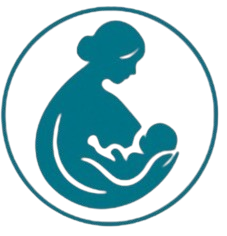1. Common Pediatric Thoracic Conditions & Their Surgical Treatments
A. Congenital Thoracic Disorders (Present at Birth)
- Congenital Diaphragmatic Hernia (CDH)
- Problem: A hole in the diaphragm allows abdominal organs to move into the chest, affecting lung development.
- Treatment: Surgical repair to reposition organs and close the diaphragm defect.
- Congenital Pulmonary Airway Malformation (CPAM)
- Problem: Abnormal lung tissue growth that can cause breathing issues.
- Treatment: Lobectomy (removal of the affected lung lobe).
- Bronchogenic Cyst
- Problem: Fluid-filled cysts in the lungs or mediastinum (chest cavity).
- Treatment: Surgical excision to prevent infections and breathing difficulties.
- Esophageal Atresia & Tracheoesophageal Fistula (EA/TEF)
- Problem: The esophagus is improperly formed, leading to feeding and breathing difficulties.
- Treatment: Primary surgical repair to connect the esophagus and separate it from the trachea.
- Pectus Excavatum (“Sunken Chest”) & Pectus Carinatum (“Pigeon Chest”)
- Problem: Chest wall deformities affecting breathing and heart function.
- Treatment:
- Pectus Excavatum: Nuss procedure (minimally invasive bar placement).
- Pectus Carinatum: Bracing or surgical correction.
B. Acquired Pediatric Thoracic Disorders
- Empyema (Pus in the Pleural Cavity Due to Infection)
- Problem: Complication of pneumonia leading to pus accumulation in the chest.
- Treatment:
- Chest tube drainage.
- Video-assisted thoracoscopic surgery (VATS) for severe cases.
- Pneumothorax (Collapsed Lung)
- Problem: Air leaks into the pleural space, causing lung collapse.
- Treatment:
- Chest tube placement for minor cases.
- Surgery (pleurodesis) for recurrent pneumothorax.
- Mediastinal Tumors (Tumors in the Chest Cavity)
- Examples: Neuroblastoma, teratoma, lymphoma.
- Treatment: Surgical excision, often combined with chemotherapy or radiation.
- Foreign Body Aspiration (Inhaled Objects in Airways)
- Problem: Blockage of the airway due to accidental inhalation of food or objects.
- Treatment: Rigid bronchoscopy to remove the object.
2. Pediatric Thoracic Surgical Techniques
- Minimally Invasive Surgery (MIS): Video-assisted thoracoscopic surgery (VATS) and robotic-assisted surgery for reduced pain and quicker recovery.
- Open Thoracotomy: Used for complex cases where minimally invasive approaches are not sufficient.
- Endoscopic & Bronchoscopic Procedures: Used for diagnosis and treatment of airway obstructions.
3. Postoperative Care & Long-Term Management
- Respiratory Support: Some children may need oxygen therapy post-surgery.
- Pain Management & Rehabilitation: To ensure proper healing and lung function recovery.
- Follow-up Monitoring: Regular check-ups to assess lung and chest wall function.


